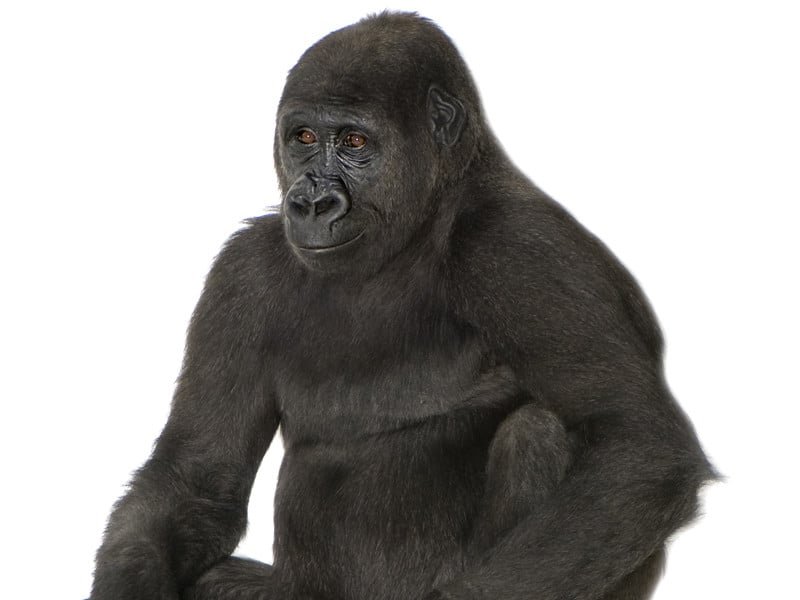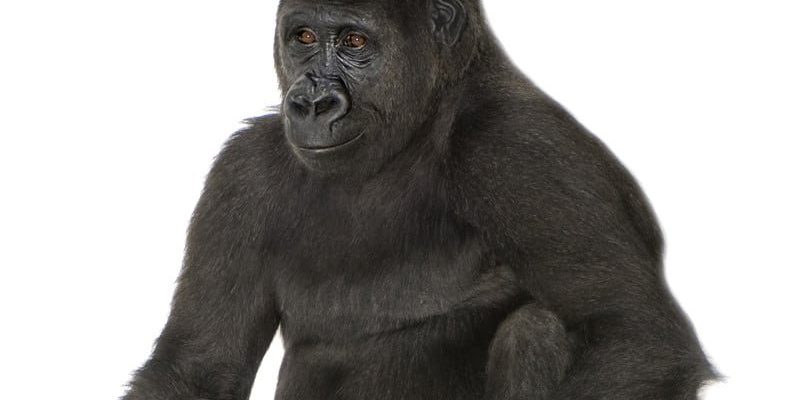
The Eastern Gorilla, known scientifically as *Gorilla beringei*, is a powerhouse of evolution that has captivated researchers and wildlife enthusiasts alike. This species, specifically divided into two subspecies— the Mountain Gorilla and the Eastern Lowland Gorilla—holds a mirror to the past, revealing how environments and behaviors shape species over time. So, grab a cup of coffee, and let’s dive into the amazing journey of the Eastern Gorilla through the ages.
Understanding Gorillas: A Brief Overview
To appreciate the evolution of the Eastern Gorilla, it’s important to understand what sets them apart from other primates. Gorillas are the largest living primates, and they belong to the family Hominidae, which also includes humans, chimpanzees, and orangutans. You might be surprised to learn that we share about 98% of our DNA with gorillas! This genetic closeness highlights not just biological relationships but also evolutionary ones.
The Eastern Gorilla is characterized by its robust build and distinct features. Standing up to 6 feet tall, with a weight that can exceed 400 pounds, these animals are primarily herbivorous, feasting on leaves, stems, and fruit. A unique social structure also forms the backbone of their lifestyle. They usually live in groups called troops, led by a dominant male known as a “silverback.” This hand-knit community dynamic plays a crucial role in their survival and adaptation over millions of years.
A Look Back: The Origins of Gorillas
The story of the Eastern Gorilla really begins millions of years ago. Fossil evidence suggests that gorillas diverged from a common ancestor shared with chimpanzees around 8 to 10 million years ago. This separation marked the start of their unique evolutionary journey. As the climate of Africa changed, various habitats emerged, leading to different adaptations among various groups of gorillas.
Around 2 million years ago, the Eastern Gorilla began to evolve in response to the lush, forested environments of Central and East Africa. The evolution of these massive creatures was influenced by factors such as food availability, climate change, and competition with other species. Imagine an ancient forest that gradually transformed due to shifting climates — as these changes occurred, the Eastern Gorilla started to adapt, leading to the unique features we see today.
The Subspecies: Mountain Gorilla vs. Eastern Lowland Gorilla
The Eastern Gorilla is divided into two subspecies, each with its distinct evolutionary path and characteristics. Let’s explore these fascinating variations.
Mountain Gorilla
The Mountain Gorilla, or *Gorilla beringei beringei*, inhabits the misty mountains of Rwanda, Uganda, and the Democratic Republic of the Congo. They have thicker fur than their lowland counterparts, making them well-suited for cooler, mountainous environments. This adaptation showcases their resilience in surviving harsh conditions.
They tend to be smaller than the Eastern Lowland Gorilla but are incredibly strong. The Mountain Gorilla’s population has seen remarkable recovery efforts since the late 20th century due to conservation efforts, which is a huge win for biodiversity and evolution. It’s quite a heartwarming story, don’t you think?
Eastern Lowland Gorilla
On the flip side, we have the Eastern Lowland Gorilla, or *Gorilla beringei graueri*. Typically larger and heavier than their mountain relatives, they roam the dense lowland rainforests of the Democratic Republic of the Congo. Their physical features are adapted to a life spent near the forest floor, where food is more abundant and diverse.
Sadly, both subspecies face significant threats from habitat destruction and poaching. Their evolution is intricately tied to the ecosystems they inhabit, and without protection, both subspecies risk the loss of genetic diversity and, ultimately, survival.
Behavioral Evolution: Social Structures and Communication
Social structures play a vital role in the evolutionary history of the Eastern Gorilla. Living in troops allows them not only to raise their young but also to protect one another. Silverbacks are not just leaders; they’re caregivers, defenders, and guides. This behavior reflects evolutionary advantages: troops can better defend against predators and compete for resources.
Gorillas also communicate through a complex system of vocalizations, facial expressions, and body language. From soft grunts to robust hoots, their communication methods enhance social bonds and foster cooperation within the group. In many ways, social behavior is one of the cornerstones of gorilla evolution, showcasing how intelligence and social skills can lead to survival.
Conservation and the Future of Eastern Gorillas
As we reflect on the evolutionary history of the Eastern Gorilla, we must also consider their future. Today, both subspecies are listed as endangered, with their populations dwindling due to habitat loss, poaching, and disease. Conservation efforts are underway, focusing on protecting their habitats, fostering community awareness, and promoting eco-tourism as a sustainable means of supporting local economies.
Here’s the thing: Protecting these magnificent creatures is not just about saving a species; it’s about preserving the rich tapestry of life that has evolved over millions of years. It reminds us of the interconnectedness of all living beings and the responsibility we have to ensure their survival.
In examining the evolutionary history of the Eastern Gorilla, we see a remarkable story of adaptation, survival, and resilience. From their ancient origins to their distinct subspecies, these majestic creatures continue to intrigue and inspire us. By understanding their journey, we foster a deeper appreciation for nature’s wonders and the importance of conservation.
As we move forward, let’s commit ourselves to the protection of the Eastern Gorilla and their habitats. After all, their story is still being written, and we all have a part to play in ensuring they thrive for generations to come.

